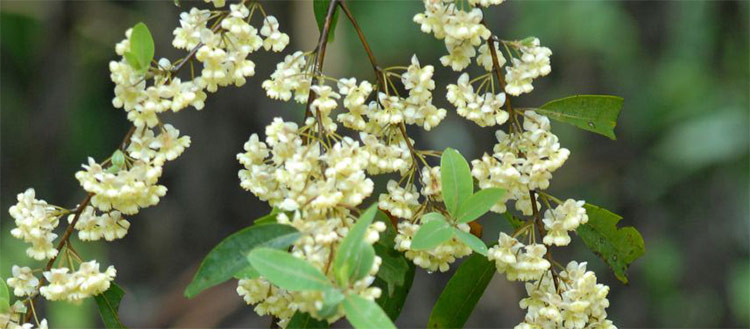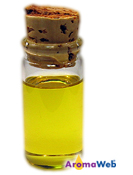May Chang Essential Oil
Litsea cubeba

"Litsea cubeba" by LiChieh Pan. Licensed under CC BY 2.0
Description
May Chang Oil is also commonly referred to by its botanical name, Litsea Cubeba Oil.
May Chang Essential Oil Benefits and Uses
- Acne
- Oily Skin
- Perspiration
- Indigestion
Source: Julia Lawless, The Encyclopedia of Essential Oils (Updated Edition) (London: Harper Thorsons, 2014), 127.
Botanical Name

Plant Family
Common Method of Extraction
Steam Distilled
Plant Part Typically Used
Color
Yellow
Consistency
Thin
Perfumery Note
Medium
Strength of Initial Aroma
Strong
Aromatic Description
May Chang Essential Oil smells sharp and has a complex lemony aroma.
Major Constituents
- Geranial
- Neral
- (+)-Limonene
- Methyl Heptenone
- B-Myrcene
- Linalool
- Geraniol
- Sabinene
- Linalyl Acetate
- a-Pinene
- B-Pinene
- Nerol
Source: B.M. Lawrence, Essential Oils 1981-1987 (Wheaton: Allured Publishing, 1989), 11. B.M. Lawrence, Progress in Essential Oils. (Perfumer & Flavorist 21 no. 5, 1996), 62. L. Zhu, Y. Li, B. Li, et al. Aromatic Plants and Essential Constituents. (South China Institute of Botany, HK, 1993). Sources cited in Robert Tisserand and Rodney Young, Essential Oil Safety (Second Edition. United Kingdom: Churchill Livingstone Elsevier, 2014), 349.
May Chang Essential Oil Safety Information
Tisserand and Young caution that a drug interaction may occur if using drugs metabolized by CYP2B6 and that there is a risk of teratogenicity. They precaution against topical use in children and infants under age 2 and for those with hypersensitive/diseased/damaged skin. They recommend a dermal maximum of 0.8%. Reading Tisserand and Young's full profile is recommended. [Robert Tisserand and Rodney Young, Essential Oil Safety (Second Edition. United Kingdom: Churchill Livingstone Elsevier, 2014), 349-350.]
This essential oil poses a higher risk of causing irritation and sensitization when used in the bath. Avoid using it in the bath, even if it is solubilized/diluted.
General Safety Information
Do not take any oils internally and do not apply undiluted essential oils, absolutes, CO2s or other concentrated essences onto the skin without advanced essential oil knowledge or consultation from a qualified aromatherapy practitioner. For general dilution information, read AromaWeb's Guide to Diluting Essential Oils. If you are pregnant, epileptic, have liver damage, have cancer, or have any other medical problem, use oils only under the proper guidance of a qualified aromatherapy practitioner. Use extreme caution when using oils with children and be sure to first read the recommended dilution ratios for children. Consult a qualified aromatherapy practitioner before using oils with children, the elderly, if you have medical issues or are taking medications. Before using this or any essential oil, carefully read AromaWeb's Essential Oil Safety Information page. For in-depth information on oil safety issues, read Essential Oil Safety by Robert Tisserand and Rodney Young.
Shelf Life
Important Information About the Profiles
The essential oil information provided on AromaWeb is intended for basic educational purposes only. The references to safety information, test results, constituents and percentages is generalized information. Essential oils can vary greatly in composition. The data is not necessary complete and is not guaranteed to be accurate. The essential oil photos are intended to represent the typical and approximate color of each essential oil. However, essential oil composition and color can vary based on harvesting, distillation, age of the essential oil and other factors. Profiles for several CO2 Extracts and absolutes are included within the directory, and are denoted as such.
